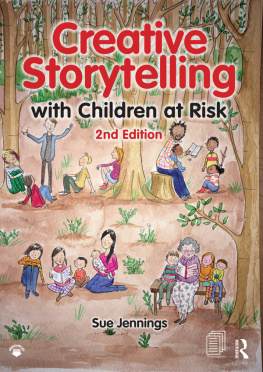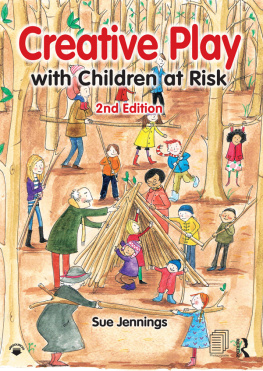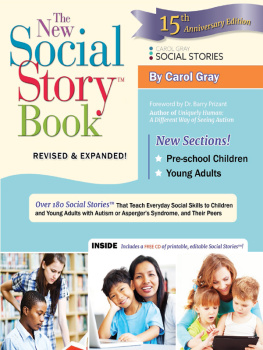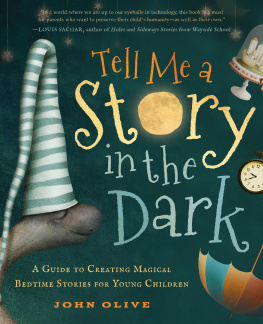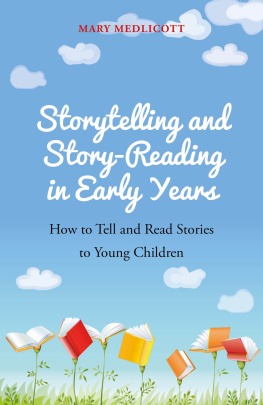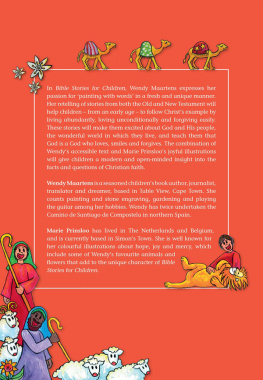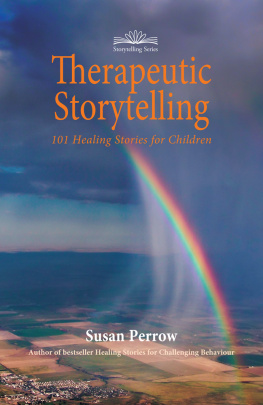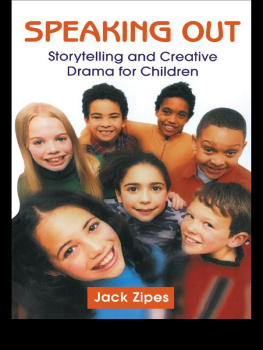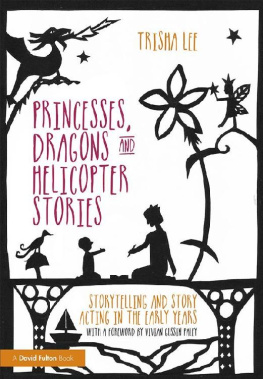Second edition published 2017
by Routledge
2 Park Square, Milton Park, Abingdon, Oxon OX14 4RN
and by Routledge
711 Third Avenue, New York, NY 10017
Routledge is an imprint of the Taylor & Francis Group, an informa business
2017 Sue Jennings
The right of Sue Jennings to be identified as author of this work has been asserted by her in accordance with sections 77 and 78 of the Copyright, Designs and Patents Act 1988.
All rights reserved. No part of this book may be reprinted or reproduced or utilised in any form or by any electronic, mechanical, or other means, now known or hereafter invented, including photocopying and recording, or in any information storage or retrieval system, without permission in writing from the publishers.
Trademark notice: Product or corporate names may be trademarks or registered trademarks, and are used only for identification and explanation without intent to infringe.
First edition published by Speechmark Publishing 2004
British Library Cataloguing-in-Publication Data
A catalogue record for this book is available from the British Library
Library of Congress Cataloging-in-Publication Data
A catalog record for this book has been requested
ISBN: 9781909301825 (pbk)
ISBN: 9781315174952 (ebk)
Typeset in Univers Light Condensed
by Florence Production Ltd, Stoodleigh, Devon, UK
Cover image by Charlotte Meyer
Original drawings for diagrams, story sheets and worksheets by Chloe Gerhardt,
Suzanne Hall and Charlotte Meyer
Visit the eResources: www.routledge.com/9781909301825
Appendix 3
Messy play recipes
The following recipes are reproduced with the kind permission of Marie Kesavan, Holy Trinity Kindergarten, Singapore.
For pictures of these recipes, see the resources page at www.playanddramapartnership.org
Home-made dough
- Cloud dough: 3 cups of flour to 1 cup of oil.
- Snow dough: 3 cups of corn flour to 1 cup of oil.
- Sandy dough: 3 cups of baking soda to 1 cup of oil.
- Snow sand: 3 cups of baking soda to 1 cup of water.
- Oobleck: 2 cups of corn flour to 1 cup of water.
- Fake snow: 2 cups of baking soda to 1 cup of hair conditioner or shampoo.
- Stretchy dough: 3 cups of corn flour to 1 cup of hair conditioner or shampoo.
- Flour dough: 2 cups of flour to one cup of hair conditioner or shampoo. (Note: a smoother texture is obtained by leaving the mixture to stand for half an hour.)
- Kinetic sand: 2 cups of corn flour, 6 cups of sand, 1 teaspoon of liquid soap and half a cup of water.
Home-made paint
- Bubble painting: mix liquid soap, food colouring and water.
- Glass painting: mix white glue and food colouring.
My thanks to Ben and Katie for their helpful ideas and unlimited patience.
I love my children and grandchildren dearly and thank them for their patience and support while Grandma is working!
And thank you to Clive Holmwood, who is such a great colleague.
Sue Jennings
Glastonbury, Somerset, 2017
Appendix 1
Extra stories to explore
The following stories provide opportunities for teachers, parents and therapists to develop ideas from their own experience. They are also good tales to be read and then discussed or drawn.
The horse and the mulberry tree (China)
Long ago, in ancient China, there lived a family with mother, father, daughter and mothers mother. One day, bandits kidnapped the father as he was working in the fields and took him to their camp in the forest. They hoped the family would pay money to get him back again. At home, the three women were very sad and did not know what to do. Grandmother sat in her chair very silent, mother cried and rocked, and Lee Ann spent time with the horse in the stable and wished she could do something.
Mother stood at the open window, wringing her handkerchief and said, If someone will rescue my husband, he shall have the hand of my daughter in marriage.

